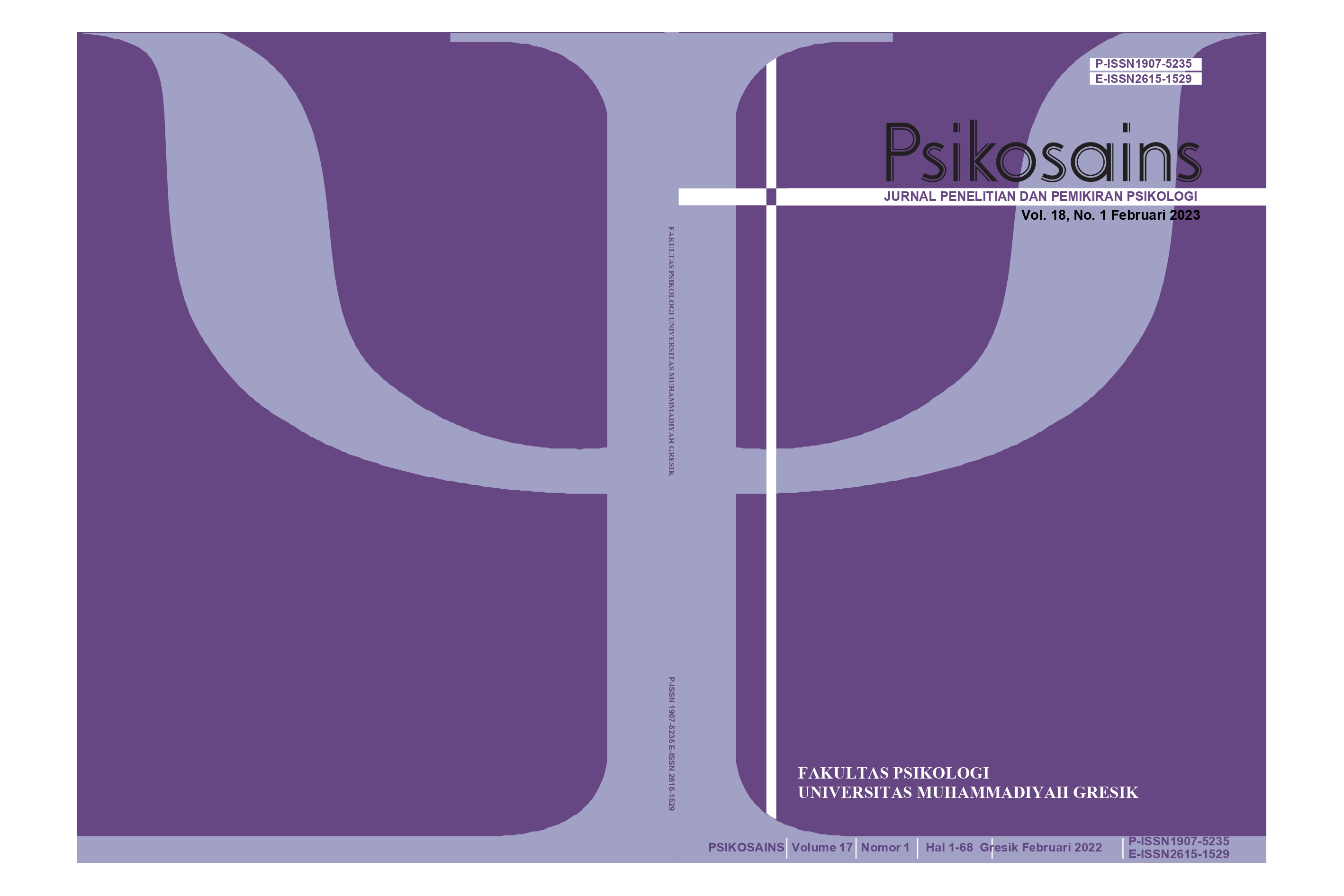Perbandingan Tingkat Kepercayaan Diri Ditinjau Dari Jenis Kelamin Pada Siswa SMA Negeri 1 Cerme
DOI:
https://doi.org/10.30587/psikosains.v18i1.5315Abstract
One of the problems that occurs in high school students today is lack of confidence in their abilities to continue their studies after graduating from high school. The purpose of this study was to find out whether there are differences in the level of self-confidence between male and female students in class XII at SMA Negeri 1 Cerme. The subject of this study was class XII students at SMA Negeri 1 Cerme. A total of 132 students were divided into 66 male students and 66 female students. The data collection technique used self-confidence questionnaire. The hypothesis testing was carried out by analyzing the median test analysis. The results of testing the hypothesis obtained Sig. (2-tailed) 0.001 <0.05, so the hypothesis in this study can be accepted, or it can be said that there is a significant difference in the difference in the level of self-confidence between male and female students.
References
Colbeck, C. L., Cabrera, A. F., & Terenzini, P. T. (2001). Learning professional confidence: Linking teaching practices, confidence. International Journal of Yoga and Allied Sciences. 1(1), 33-45.
Depdiknas, (2004). Kurikulum Pendidikan Dasar. Jakarta.
Fakih, Mansour. Analisis Gender & Transformasi Sosial. Yogyakarta: Pustaka.
Fatma, F. (2015). A study of self-confidence of adolescents in relation to their gender, locality and academic achievement, IJAR, 1(12), 541-544.
Hakim, T. 2002. Mengatasi Rasa Tidak Percaya Diri. Jakarta: Puspa Swara. Horne, H. H. (1932). The Democratic Phylosophy of Education : Companion to
Dewey’s democracy and education. Jakarta : Bumi Aksara.
King, L. A. (2014). Psikologi Umum Sebuah pandangan Apresiatif. Jakarta: Salemba Humanika.
Lauster, P (2002), Tes Kepribadian, Edisi bahasa Indonesia, (cetakan ke-3).
Listiyanto, M., & Sutarto, W. (2016). Perbedaan Self Confidence ditinjau dari Jenis Kelamin di Mix Swalayan Salatiga”. Skripsi. Salatiga: Fakultas Psikologi Universitas Kristen Satya Wacana.
Mustari, M. (2014).Nilai Karakter Refleksi Untuk Pendidikan. Jakarta: Pendidikan Nasional. Jakarta, Depdiknas.
Perry, D.G. & Pauletti, R.E. (2011). Gender and adolescent development. Jpunal of Research on Adolescence, 21 (1), 61-74. https://doi.org/10.1111/j.1532- 7795.2010.00715.x
Rousseau, J.J. (2003). Ilmu Pendidikan. Jakarta: PT Raja Grafindo Persada.
Seiffge‐Krenke I, Aunola K, Nurmi JE. Changes in stress perception and coping during adolescence: The role of situational and personal factors. Child Dev, 80(1):259-279.
Tripathy, M., & Srivastava, S. K. (2012). To study the effect of academic
achievement on the level of self–confidence. International Journal of Yoga
and Allied Sciences, 1(1), 33-45.
Wardhaugh, R. (2006). An Introduction to Sociolinguistics. Oxford: Blackwell. Wigfield, A. and Eccles, J.S. (2000), “Expectancy - value theory of motivation”,
Contemporary Educational Psychology. 25, 68-81.

